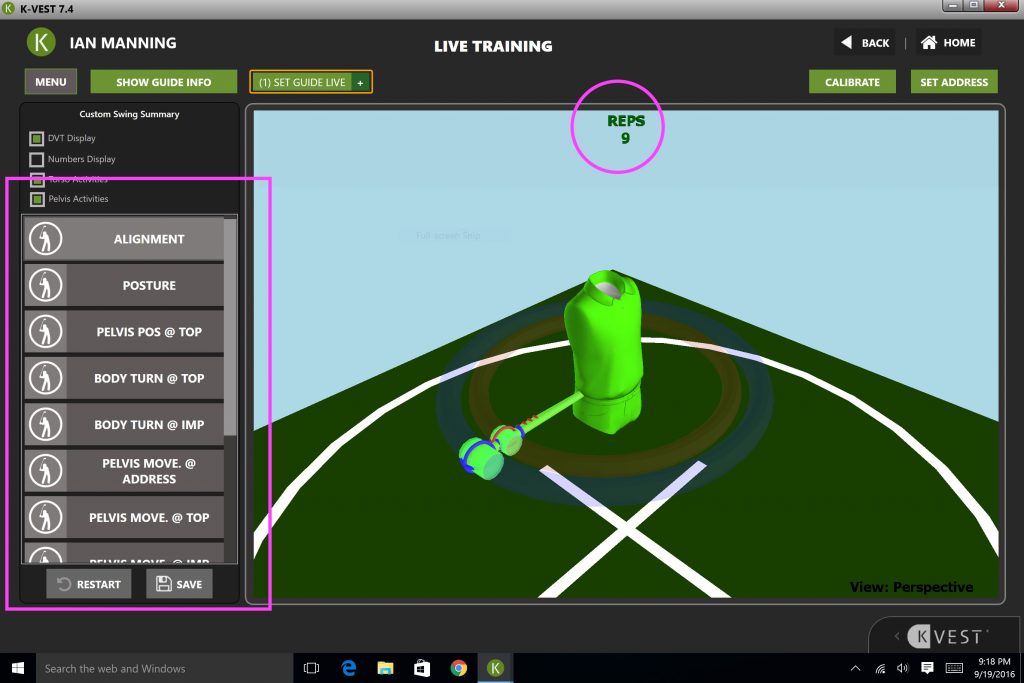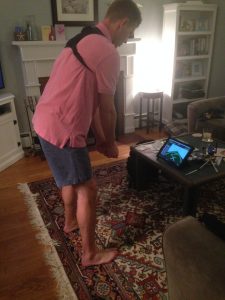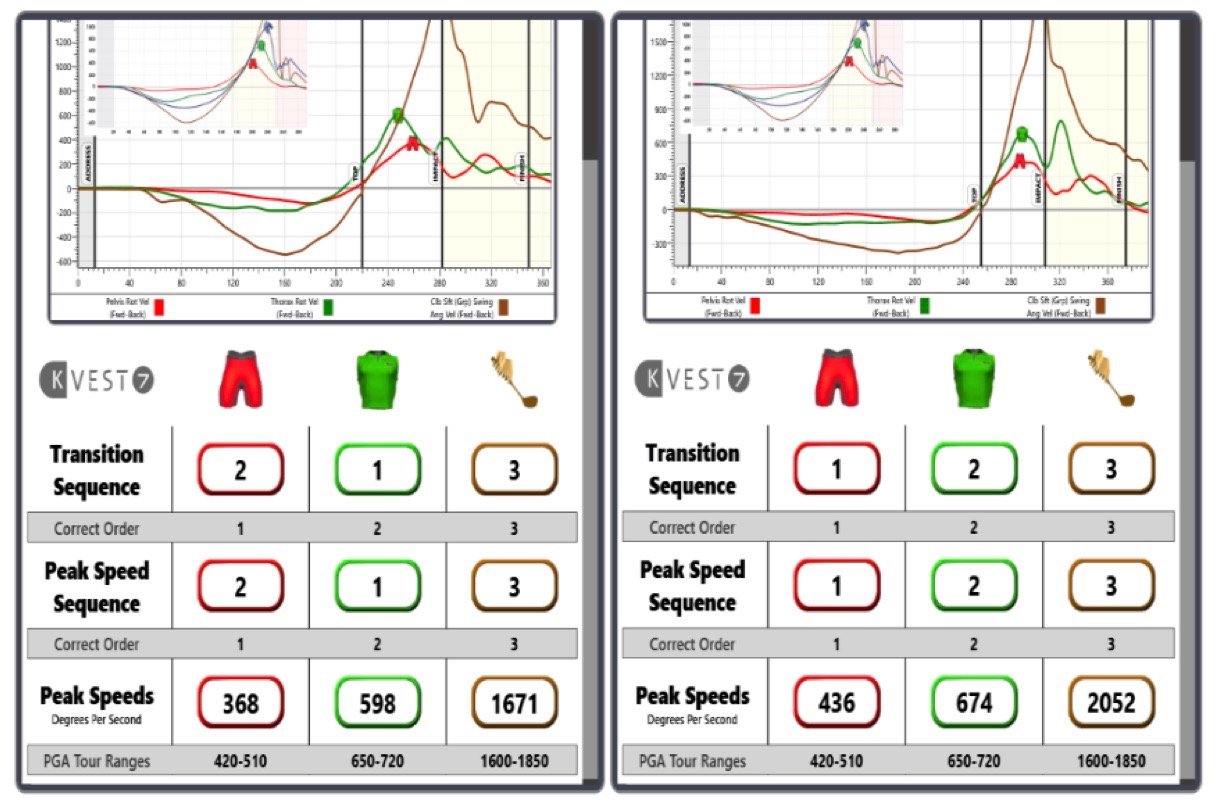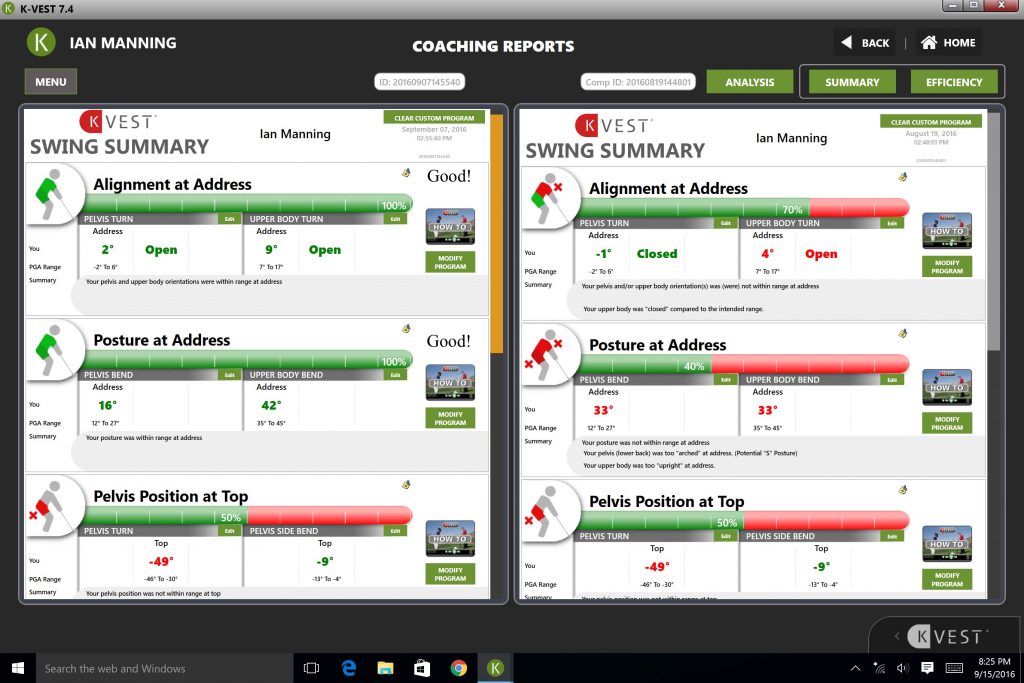IMPROVE MY GAME
Articles
A TPI Certified Expert's Journey to a Pain Free Swing
About a month ago I wrote an article that chronicled my battle with back pain in my golf swing titled Why I Get Back Pain When I Golf. Since publishing, I have been working hard and wanted to offer some updates on how I use TPI and K-Vest to improve my golf swing.
It all Starts With an Evaluation
After seeing the numbers and graphs on K-Vest, I decided to start at the beginning. I do it with all my clients so why wouldn’t I start with a TPI evaluation? A TPI evaluation will highlight any flexibility and strength deficits you have that can be leading to swing issues that might be causing pain and inconsistencies in your swing.
So what did the TPI evaluation show? It showed that I didn't have many major limitations, but a few minor areas I could improve upon such as some slight core weakness with pelvic tilting, and some balance issues on my left foot (due to about 12 ankle sprains, thanks volleyball). That’s about it.
So what does that mean about my swing? Well…it means that my swing is messed up because of a poor motor pattern, not due to physical restrictions. It makes sense when I think about it. When I started my TPI education quest in 2008 learning about the Body-Swing Connection™, I learned that my body and my swing were not connected. The screen highlighted all types of issues back then. I couldn’t squat properly, couldn’t separate my shoulders from my hips, and a slew of other issues that were leading to an inconsistent swing (I was 28 at the time so I didn’t really care about the back pain). I took it upon myself to fix all the strength and flexibility issues that the TPI evaluation showed. It didn’t feel right telling other golfers they needed to work on this stuff when I couldn’t do it myself. I’ve done my homework and improved my strength and flexibility but I never took the last step which is fixing my motor pattern.
Body Restrictions vs. Poor Motor Problem
They really work off of each other at first to create your golf swing. In any golfer, your body will create your swing and your motor pattern. That means that you create your swing around any restrictions that you have whether it be strength, flexibility, or both.
There are four phases of the golf swing; address, top of the backswing, impact, and follow through. Golfers will get to these positions working around any restrictions they may have. When you do that, your brain creates a motor pattern that is labeled “golf swing.” Through thousands and thousands of repetitions, you fortify this pattern and really groove it. The problem with working around restrictions is that eventually you will break down, it is just a matter of when. Look at Tiger Woods, he has been swinging around restrictions and has been very successful. He has also had 3 knee surgeries, 2 back surgeries, etc.
When you look at my issues, I don’t really have any body restrictions. So why do I still get back pain when I golf? I have a bad “golf swing” motor pattern that I’ve been working on since I was 13, built around my restrictions. Just because I take away the restrictions doesn’t mean my brain knows how to use the new strength and flexibility I’ve built. When I step up to a golf ball my brain will always use the old “golf swing” pattern until I improve my golf swing. Enter K-Vest.
Using Bio-Feedback to Improve My Golf Swing
One of the amazing things about K-Vest is that it builds a custom program for you centered around your personal restrictions. For me, I needed help getting into the right positions at the top of my swing and also with my set up issues.


The other nice thing about K-Vest is that you can do it whenever, and wherever you want.
You don’t even need room to swing a club. I don’t have much free time during the day due to work and kids so I decided to do my exercises at night in the comfort of my own home.
I performed the K-Vest program 3x/wk and it took me maybe 15-20min to go through the whole thing. Even I have 15min to improve my golf swing!
1 Month Results
TRANSITION
The results are in and what do they say? Lets take a look at the transition sequence first.

On the left is the old swing on the right is the new swing. As you can see, I now have the proper transition at the top, starting with my hips, and then having the shoulders and hands follow. I was also able to correct the speed sequence as well. Take a look at those speed numbers! A happy byproduct of improving the transition is much higher speeds. It’s pretty cool to see that your speed can increase by just working on the transition. I did zero, not kidding, zero speed work. All I did was what K-Vest told me to do.
SET-UP
The next thing I want you all to see is the set-up. If you remember from before my set-up was no bueno with 3 red figures.

In this picture, the old is on the right and the new is on the left. After working with K-Vest, my alignment is slightly open but that is okay and my posture is right on. Starting in the right position is really important. If you can’t set-up in the right position it only leads to compensations to get into the right impact position.
TOP OF THE BACKSWING
Lastly, let's take a look at that reverse spine angle that I was dealing with. Notice how I said “was.”


Old on the right, new on the left. You can see that my spine bend away from the target is actually worse than it was originally by 2 degrees (blue circles). It is still within “normal” though and if you look at the graph above, I never drop below zero in my backswing (purple arrow). That means I have eliminated the reverse spine angle, and my back pain.
One last thing to note is the spine tilt at the top of my swing (purple circle). Originally, I would get flat at the top meaning my left shoulder would be too high. That was also leading to spinal compression. Now the numbers are right on. That means my spine stays on plane at the top of the swing in a neutral position.
1 Month Summary
I’m going to be 100% honest... I never expected to improve my golf swing this fast. It was also much easier than I thought it would be. I can’t tell you how nice it is to hit balls without having pain in my back. If you are someone who plays with back pain, then you know exactly what I mean.
Now, is it perfect? No. I think its a great step in the right direction though. I’m going to stick with the plan and keep trying to improve those numbers and make my swing more consistent. Unfortunately the off season is almost upon us. The good thing is I have the K-Vest to help cure my winter blues. See you all in a month.
If you want to read my first post about the K-Vest you can find it here at Why I Get Back Pain When I Golf

Ian Manning graduated with his Masters degree in Physical Therapy from Northeastern University in 2004. Ian has always worked with orthopedic based injuries. Starting in school with his co-op/clinical rotations leading into his professional career as a PT. He is constantly working to continue his education through course work and staying current with research. Ian is certified through the Titleist Performance Institute (TPI) to treat golf related injuries and to improve golf performance. Please visit our Golf Performance and Rehabilitation section for more information. Learn more about Ian Manning + Follow him on Twitter .